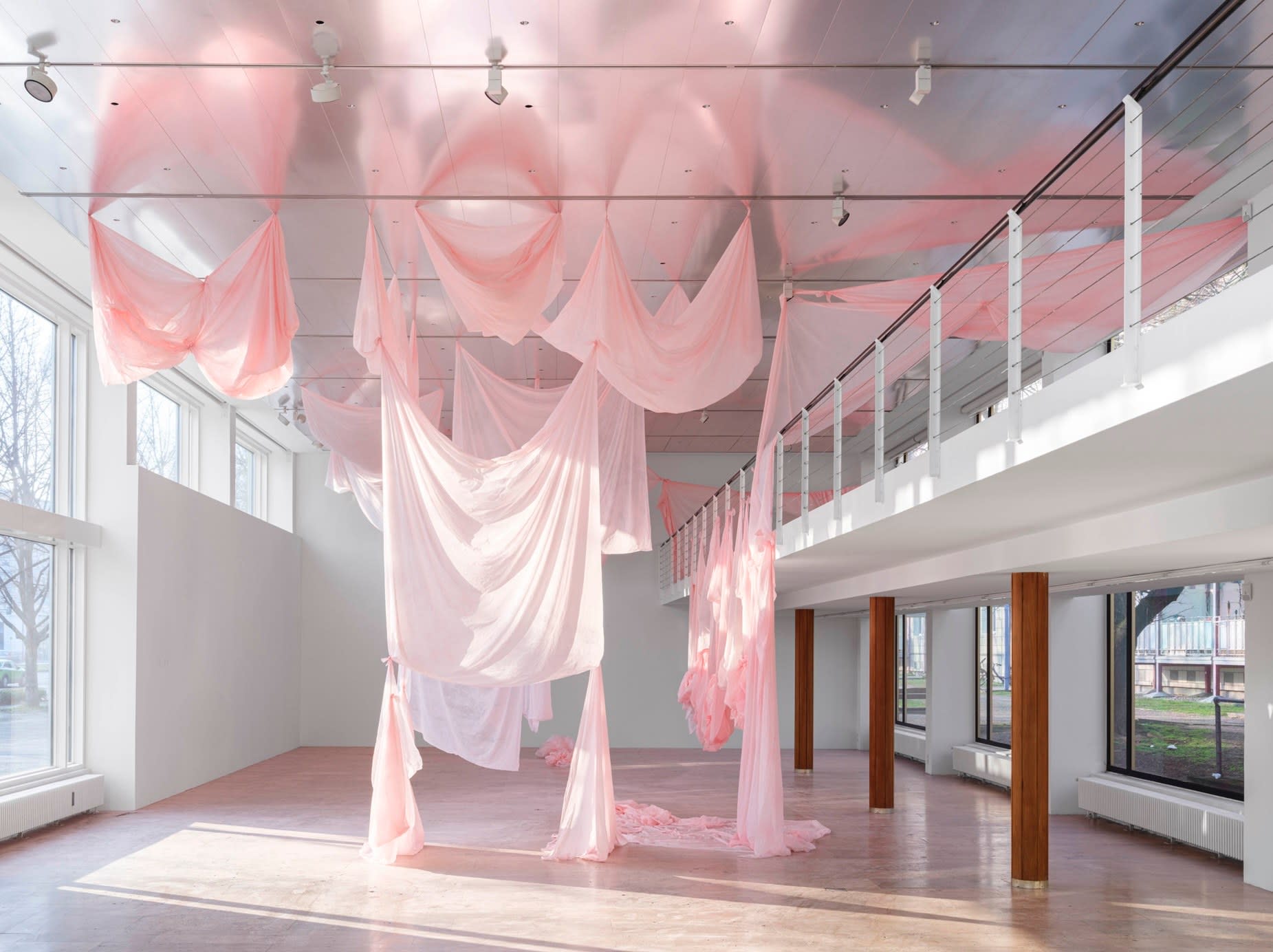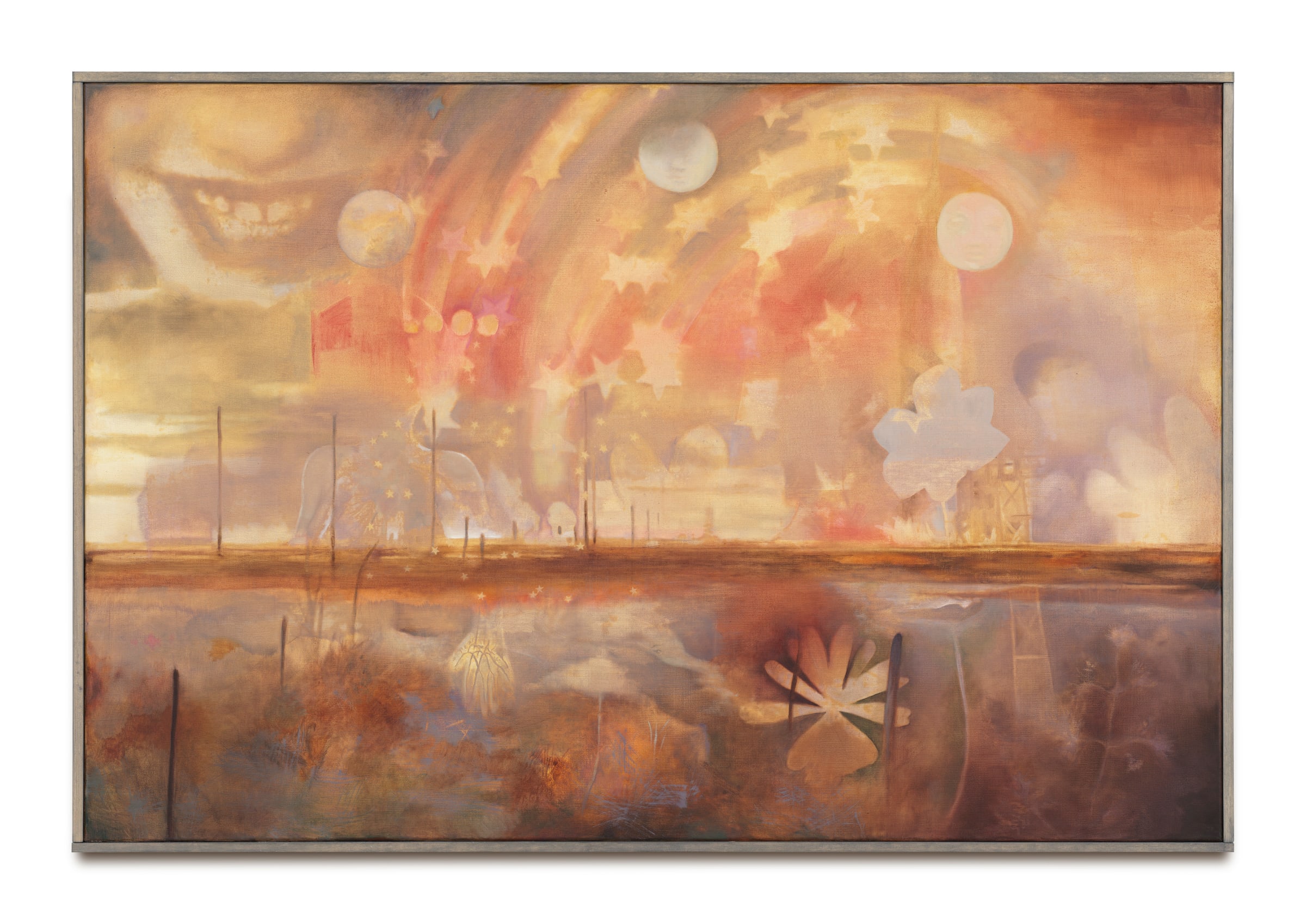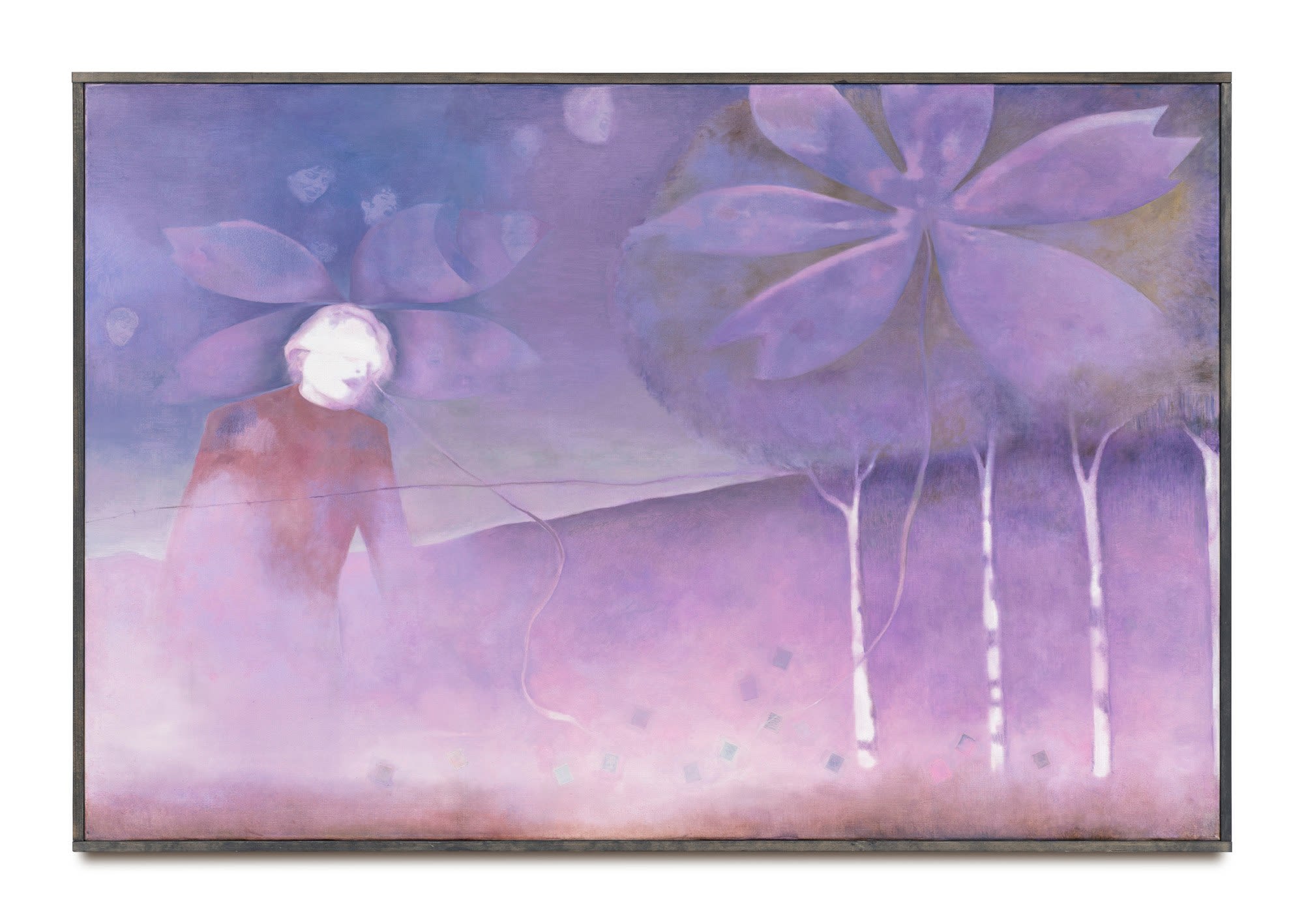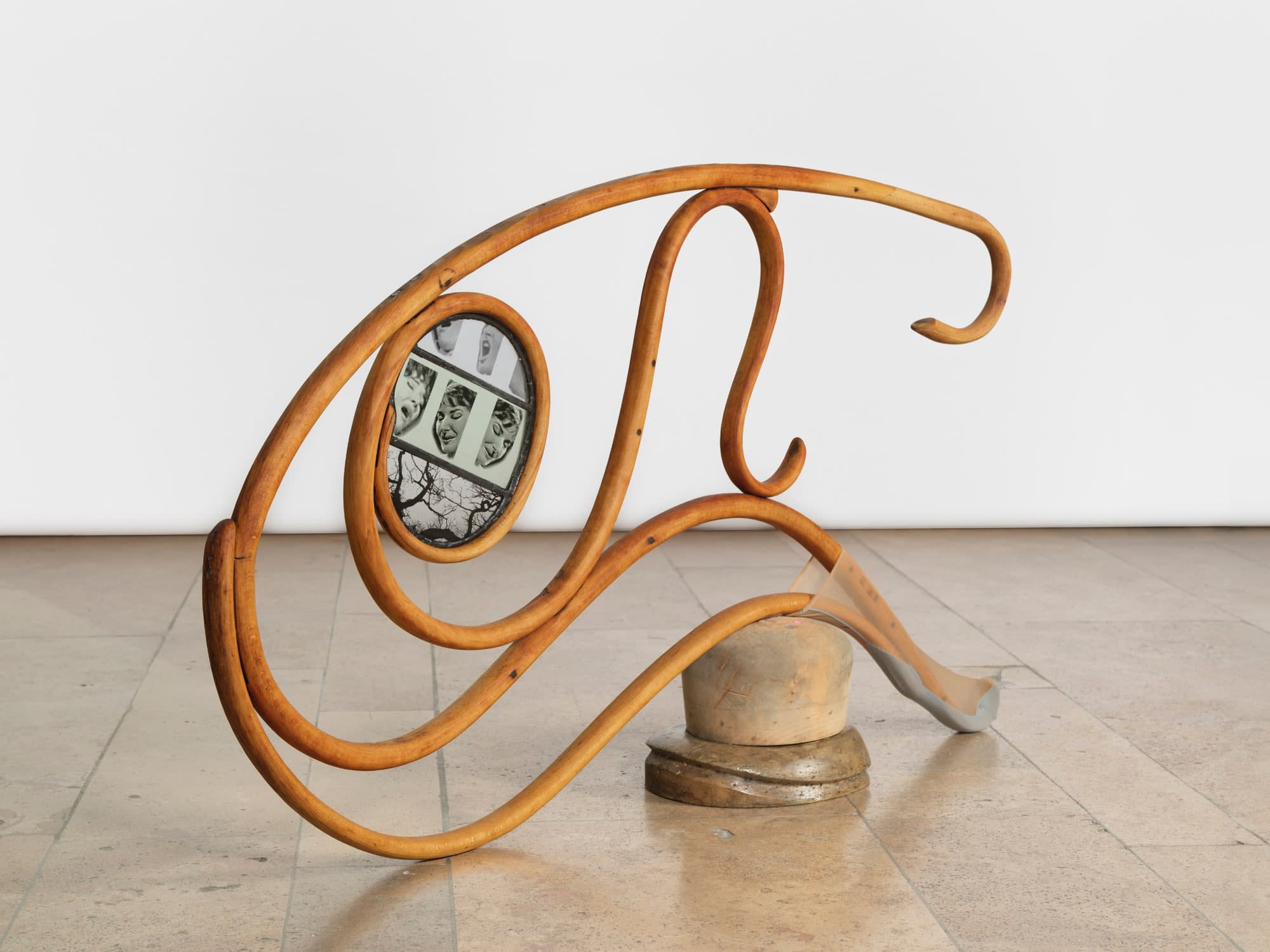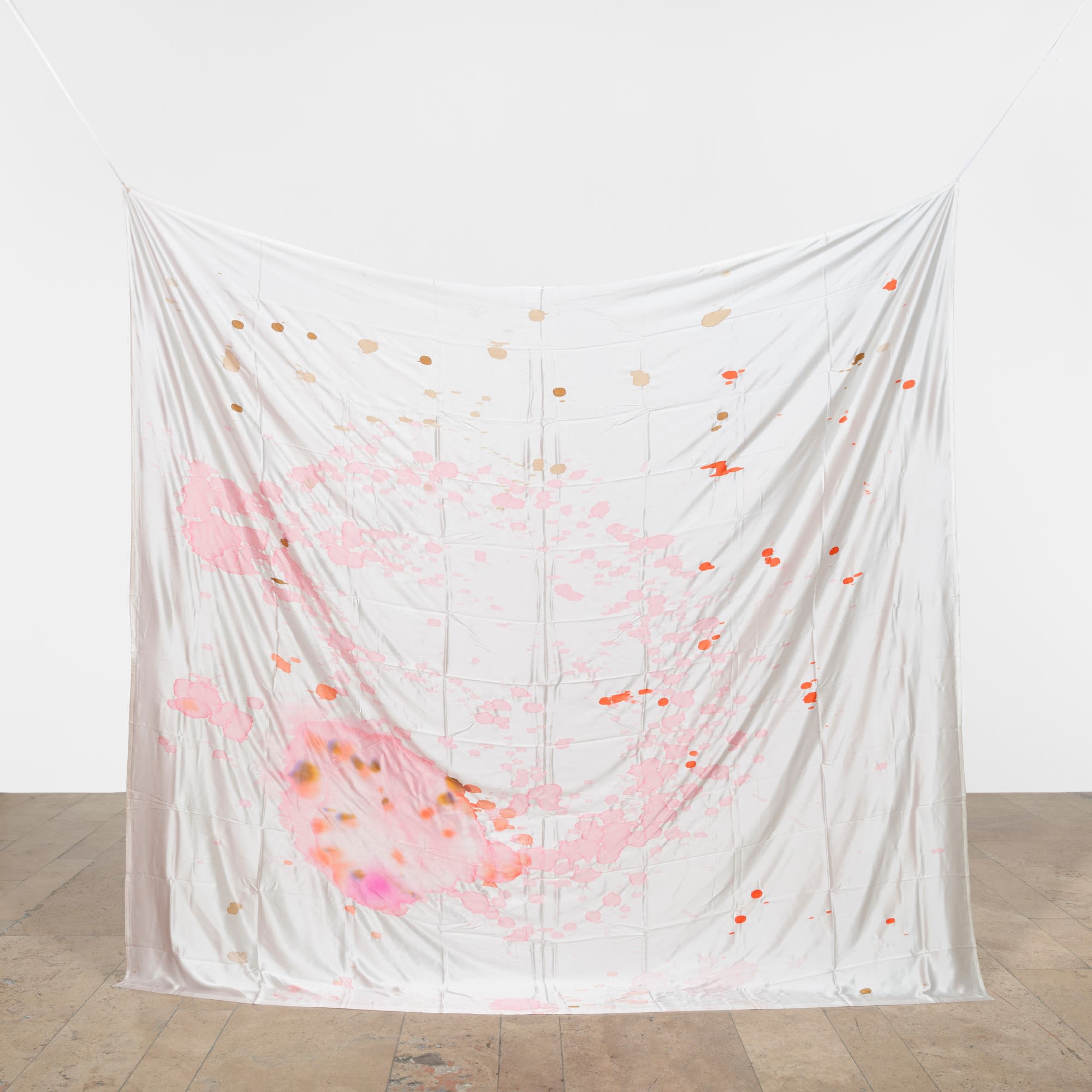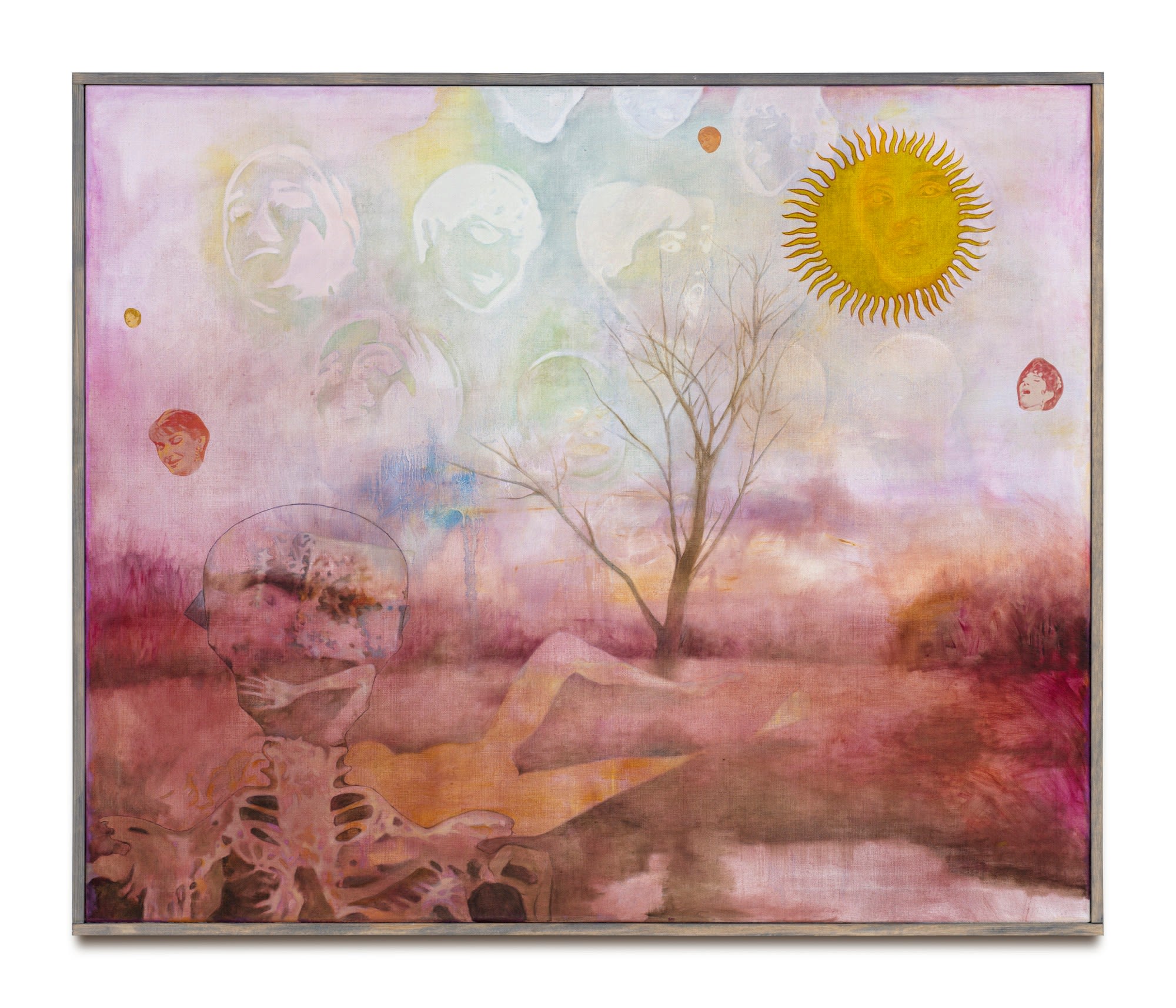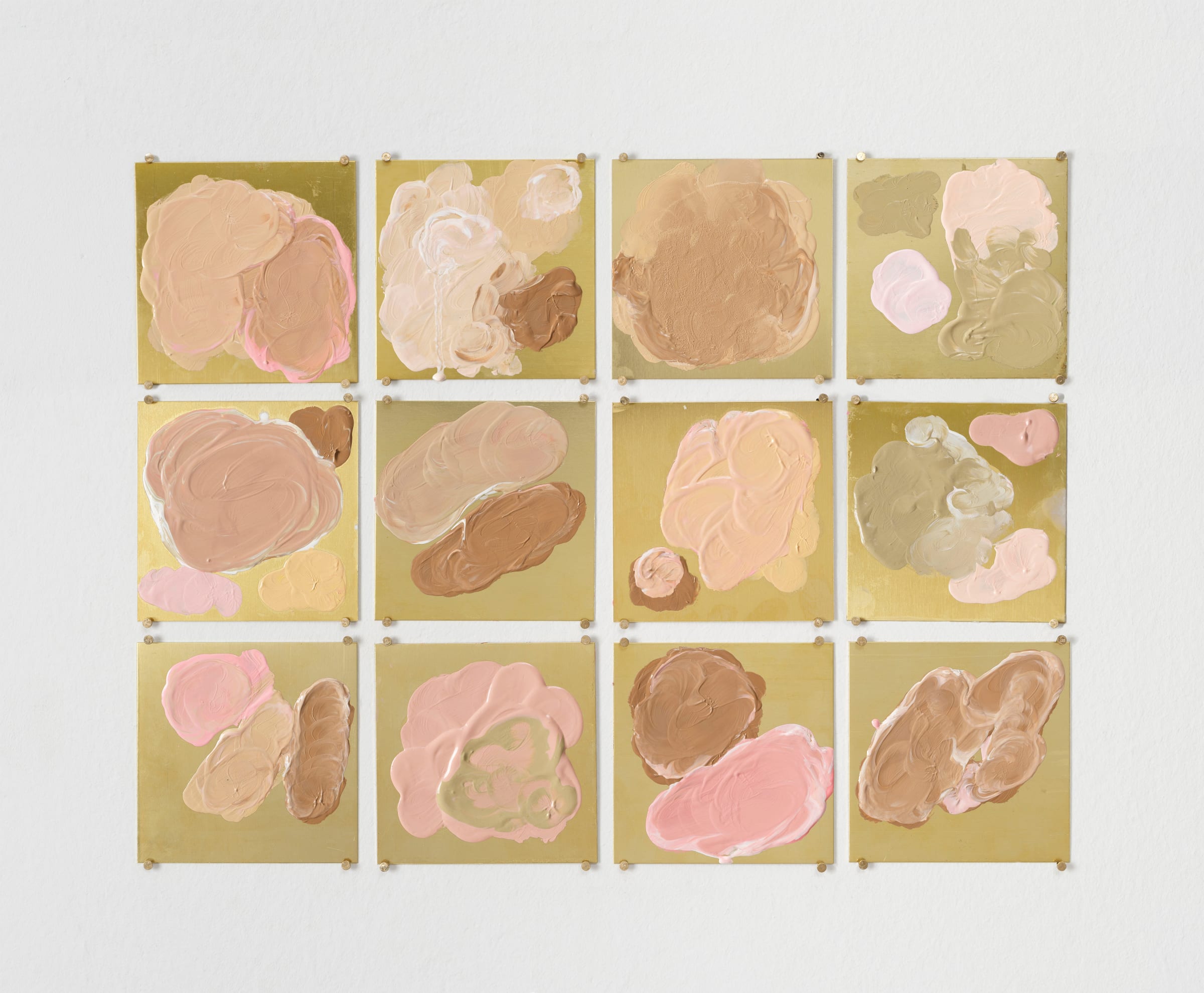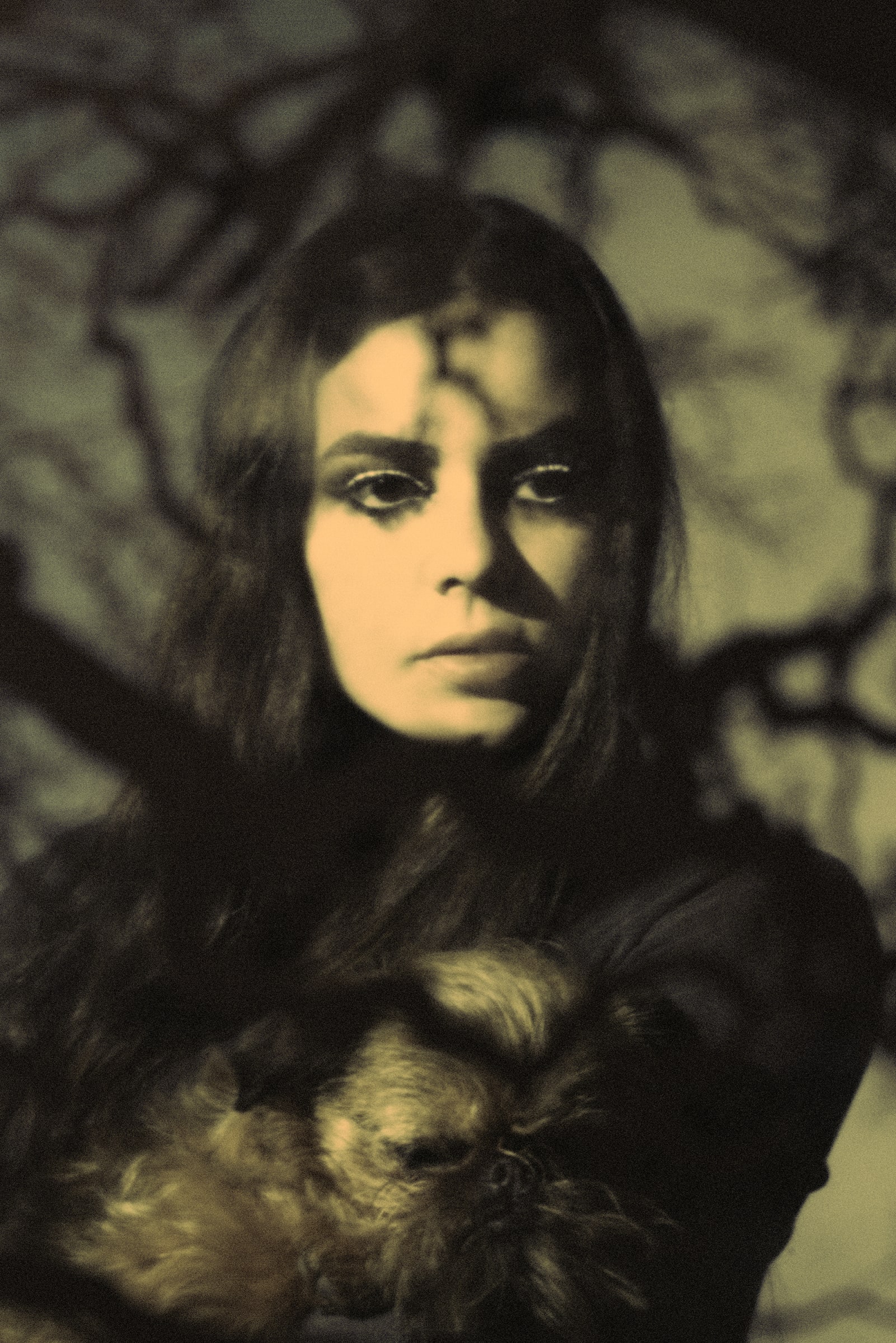Karla Black and Alexandra Metcalf
-
Overview
At first, I was surprised by the pairing of these two artists—one, Karla Black, whose art has fascinated me for nearly twenty years now; the other, Alexandra Metcalf, whose work I only discovered about a year ago. With both, I should say, however, their work had an immediate impact the first time I saw it: Here, it was evident straightaway in each case, was an unmistakably distinctive artistic approach, deeply considered. That’s just it: It’s precisely because the work of both artists elides established categories that I wondered what rubric would unite them.
I suppose it’s that Black’s work has been resolutely abstract, founded in an implicit faith in the liberatory potential of a direct perception of the materiality of things: their texture, hue, quantity, relations, and so on. We often speak of “raw material,” and artists’ intentions usually involve “cooking” their materials in order to transform them; but Black often seems determined to use her materials in such a way as to preserve their raw quiddity even as she orchestrates them with such subtlety. Metcalf’s work, on the other hand, while nothing if not hyper aware of its own material embodiment—which is usually rather unconventional and in some way vexed—is always mediated by that spectral, in some way extra-material dimension of being that we call image. Black’s art recalls us to the sheer existence of things, Metcalf’s to their ambiguous hold on our psyches.
Much of Black’s art could be described as a form of sculpture that incorporates and transcends painting but is never pictorial. Many of her pieces seem to refuse autonomy, using the space in which they are installed as their “ground or armature”. Others are more self-contained, but in acceding to that condition, they contest its usual implications or presuppositions: works made with paint on mirrors, for example, thereby undermining the suggestion that the viewer should be able to “see in” to them. For Black, paint on a planar surface remains sculptural, while color—the sine qua non of painting—becomes as much a sculptural element as shape or volume. I think, too, a work of Black’s from 2016 that evokes painting in a different way, by hanging parallel to but at a distance from the wall, like a complicated kind of false wall that keeps reminding you it’s not the real wall it does and doesn’t mimic. That piece is called Or Else It’s Just Surface, which suggests that, for Black, the difference between “surface” and “just surface” is something to wonder about.
What this implies is that, even within the plenitude of material presence, there is something elusive, something intangible, which has to do with desires that come to us from outside our present situation, whatever that might be, and that also lead us away from that present situation. Here we find what Emily Dickinson called that “internal difference, / Where the Meanings, are.” It’s the zone that Metcalf probes, ever so delicately, knowing intimately as Dickinson did the “Heavenly Hurt, it gives us,” and wanting to preserve the pleasure and the poignancy in equal measure and inextricability. Unlike Black, Metcalf willingly admits image into her art, which positively encourages our seeing-in. But that’s not to say she puts faith in the image-world, far from it. In fact, she never grants her imagery any solid presence. It remains apparitional, always either just about to materialize or just about to resolve into something substantial but never quite doing either.
The work’s materiality is distinct from its image content, and just as striking. Metcalf’s paintings, for instance, retain a noticeably “built” aspect, even as their imagery maintains a ghostly intangibility. Thus, she sometimes uses decoupage, that is, a collagelike craft technique for decorating objects with paper cut-outs sealed with varnish, as a way of both inserting legible pictures into her painted compositions and at the same time reminding us that these works are never anything but tangible objects not unlike the sorts of knickknacks and furniture that the procedure is normally used to embellish. But by the same token, her freestanding or wall-mounted sculptural works will suggest imagery that may not quite resolve. Fragments of bent-wood chairs or walking sticks not only retain their evocation of the human bodies to which they might once have offered support but seem to have taken on an eerie animation of their own, to have become living-unliving images in their own right.
In one recent sculpture of Metcalf’s, one of these uncannily enspirited fragments, a wooden curlicue, seems to be peeking its head through a detached doorway. I thought about how Black, too, in her occupation of an exhibition space, might use a door as an element in her work and as the support for some further intervention. But her inclination would probably not be to detach the door from its functional architectural context as Metcalf has done. Is that the “internal difference” within the qualitative unity formed, however temporarily, by the cohabitation of these two artists’ work—a difference, one might say, in the degree of fictionalization each one is willing to countenance? Possibly. Black sets out a landscape where the figure is you, though you may never find your reflection in it; the one Metcalf builds is haunted—maybe, likewise, by you, the ghosts of your imagination. In concert, I believe, their works will make a place where the human is not the end-all and be-all, but where, as Dickinson writes, “the Landscape listens – / Shadows – hold their breath.”
Text by Barry Schwabsky
Karla Black’s numerous solo exhibitions include Bechtler Stiftung, Uster (2024); New Art Gallery Walsall, UK (2023); Modern Art Gallery, London (2022); Fruitmarket Gallery, Edinburgh (2021); Des Moines Art Centre (2020); Schirn Kunsthalle, Frankfurt (2019); Le Festival d’Automne, Paris (2017); Museum Dhondt-Dhaenens, Deurle (2017); Scottish National Gallery of Modern Art, Edinburgh (2016); Irish Museum of Modern Art, Dublin (2016); Gemeentemuseum, The Hague (2013); Dallas Museum of Art (2012); Gallery of Modern Art, Glasgow (2012) among others. Her group shows include Deichtorhallen, Hamburg (2020); Lenbachhaus, Munich (2017); Centre Pompidou, Paris (2016); Scottish National Gallery of Modern Art, Edinburgh (2014); Museum Ludwig, Cologne (2012); Carré d’Art-Musée d’art contemporain de Nîmes (2011); Bundeskunsthalle Bonn (2010); Tate Britain, London (2009) and many more. Black represented Scotland at the 57th Venice Biennale (2017) and her work was shown at Manifesta 10 in St. Petersburg (2014).
Her work is in major public collections such as the Tate, London; Solomon R. Guggenheim Foundation, New York; Hammer Museum, Los Angeles; Scottish National Gallery of Modern Art, Edinburgh; KiCo Collection, Munich and others.
Alexandra Metcalf graduated from the Chelsea College of Art and Design, London and Rhode Island School of Design, Providence. In 2025, she will have a solo exhibition at The Perimeter in London. Her work has recently been exhibited at FRAC Corsica, Corte; Forde, Geneva; Kunsthalle Zürich; Champ Lacombe, Biarritz; and Ginny on Frederick, London. Metcalf’s work is held in The Museum of Modern Art Library Collection, New York; The Perry and Marty Granoff Center for the Creative Arts, Brown University, Providence.
-
Installation Views
-
Works

Karla Black
Thrown Towards Home, 2024Polythene dust sheets, plaster powder, powder paint
Dimensions variable -

-

-
-
-

Alexandra Metcalf
o mystery, o misery, 2024Oil and decoupage on linen, Artist’s frame
103 x 153.2 cm
40.5 x 60 inches -
-
-

Alexandra Metcalf
Bittersweet Telepathy, 2024Oil on linen, Artist’s frame
103 x 153 cm
40.5 x 60.2 inches -
-

-
-

-

-
-

-

-

Karla Black
Civil, 2024100% silk bed sheet, watercolor inks
284 x 271 cm
111.8 x 106.7 inches -

-

-

-

Alexandra Metcalf
Mazeland, Dazeland, Driftland, 2024Oil and decoupage on linen, Artist’s frame
103 x 193 cm
40.5 x 76 inches -

Karla Black
Forget About Where, 2024Mirror, glass paint and oil paint
240 x 190 cm
94.5 x 74.8 inches -

-

-

-
Related Artists


